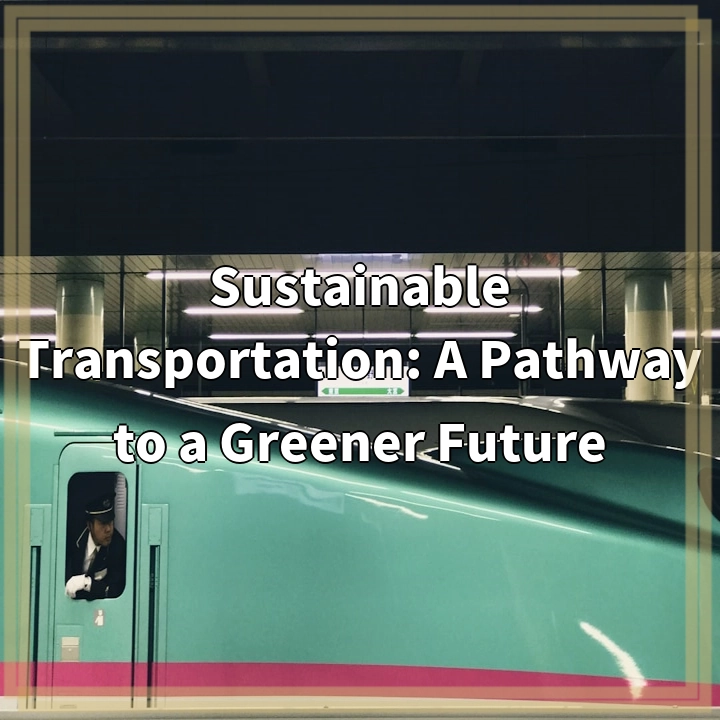
What is Sustainable Transportation?
Sustainable transportation refers to modes of transportation that have minimal negative impacts on the environment, economy, and society. It focuses on reducing carbon emissions, promoting energy efficiency, minimizing congestion, and improving the overall quality of life. Sustainable transportation aims to meet the needs of present and future generations without compromising the ability of future generations to meet their own needs.
Real-World Problems Associated with Sustainable Transportation
1. High Carbon Emissions from Vehicles
One of the major challenges in achieving sustainable transportation is reducing the carbon emissions produced by vehicles. Traditional vehicles powered by fossil fuels are a significant contributor to greenhouse gas emissions, causing climate change and air pollution. This poses a threat to public health and contaminates the environment.
2. Congestion and Traffic Jams
Urban areas often face the issue of traffic congestion and long commute times. The excessive number of vehicles on the road leads to wasted time, increased fuel consumption, and higher levels of pollution. It also has a negative impact on the overall well-being and productivity of individuals.
3. Inadequate Infrastructure for Sustainable Modes of Transportation
A lack of proper infrastructure for sustainable modes of transportation, such as cycling lanes, pedestrian-friendly walkways, and efficient public transit systems, poses a challenge to the adoption of sustainable transportation options. Without the necessary infrastructure, it becomes more difficult for people to choose eco-friendly modes of transportation.
4. Limited Accessibility in Rural Areas
In rural areas, accessibility to sustainable transportation options can be limited. Public transportation may not be readily available, and the infrastructure required for walking or cycling might be inadequate. This dependence on personal vehicles in rural areas contributes to higher emissions and greater reliance on fossil fuels.
5. Affordability and Cost-Effectiveness
For sustainable transportation to be widely adopted, it needs to be affordable and cost-effective for individuals. Electric vehicles, for example, are still relatively expensive compared to traditional gasoline-powered vehicles. Additionally, the establishment and maintenance of sustainable transportation infrastructure require significant investments, which can pose financial challenges for governments and communities.
By addressing these real-world challenges, we can pave the way towards a greener future and achieve a more sustainable and equitable transportation system.

Solutions for Sustainable Transportation
1. Transition to Low-Emission Vehicles
A key solution to reducing carbon emissions is the widespread adoption of low-emission vehicles. This includes electric vehicles (EVs) and hybrid vehicles that have significantly lower or zero emissions. Governments and communities can provide incentives and subsidies to promote the purchase of EVs and invest in the development of charging infrastructure.
2. Promote Efficient Public Transportation
Investing in reliable and efficient public transportation systems can help reduce traffic congestion and encourage people to choose sustainable modes of transportation. This includes improving and expanding bus and train networks, implementing bus rapid transit systems, and integrating different modes of transportation to provide seamless connectivity.
3. Develop Cycling and Pedestrian Infrastructure
Creating dedicated cycling lanes and pedestrian-friendly walkways can encourage more people to walk or cycle for their daily commute. This requires the development of safe and accessible infrastructure, including bike sharing programs, bike racks, and pedestrian-friendly streets. Governments and city planners play a crucial role in designing and implementing such infrastructure.
4. Introduce Carpooling and Ridesharing Services
Encouraging carpooling and ridesharing services can help reduce the number of vehicles on the road, easing congestion and reducing emissions. Governments and private companies can incentivize carpooling through dedicated lanes, reduced tolls, or discounts for shared rides. Technology platforms can also play a role in facilitating ridesharing and carpooling arrangements.
5. Invest in Renewable Energy for Transportation
Shifting to renewable energy sources for powering transportation can significantly reduce the environmental impact. Governments and private sector entities can invest in renewable energy infrastructure, such as solar and wind-powered charging stations for electric vehicles, to further reduce carbon emissions associated with transportation.
By implementing these solutions, we can make significant progress toward creating a more sustainable transportation system, reducing carbon emissions, and building a greener future for all.















